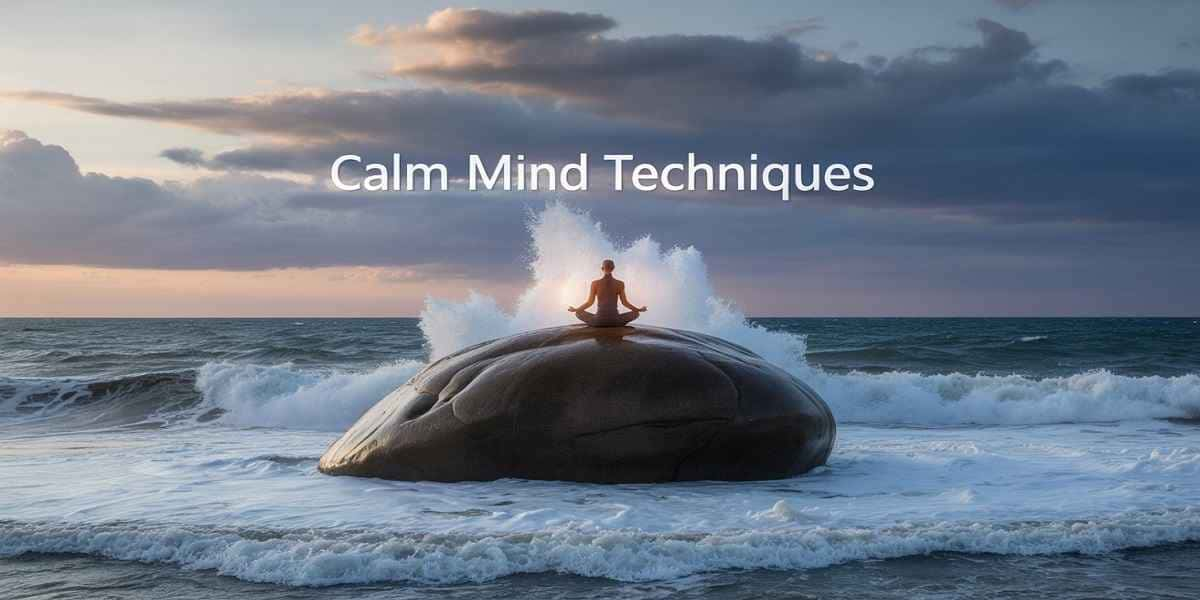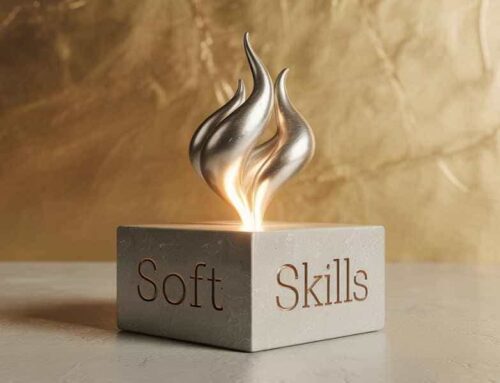
Calm Mind Techniques
Feeling overwhelmed? Are you searching for calm mind techniques to navigate the daily chaos?
Life often feels like a relentless storm, doesn’t it? The winds of stress, the torrential downpour of worries, the thunder of anxiety – they can leave us feeling adrift, our mental landscape a chaotic mess. You’re not alone if you’ve ever felt this way.
In our fast-paced world, maintaining inner peace feels like a superpower. But what if I told you it’s not a mystical ability, but a skill you can learn and master? This isn’t about escaping reality; it’s about transforming your relationship with it. It’s about building an unshakeable core of tranquility, a sanctuary within yourself that no external force can disturb.
Are you ready to discover the potent calm mind techniques that will help you master your mental storm, starting now?
Understanding the Mental Storm: What Are We Up Against?
Before we dive into calm mind techniques, let’s understand the landscape of our internal struggles. What fuels these mental storms? Often, it’s a combination of factors:
Stress: The ever-present hum of modern life. Deadlines, financial pressures, relationship challenges – stress is a natural response, but chronic stress erodes our peace. Do you find yourself constantly in “Fight or Flight” mode?
Anxiety: The “What Ifs” that haunt our thoughts. Anxiety can manifest as a persistent low-grade worry or sudden, debilitating panic attacks. Does your mind race, replaying scenarios or imagining future problems?
Overthinking: The endless loop of analysis, often leading to paralysis. We dissect every conversation, every decision, every perceived slight. Are you caught in the snare of analysis paralysis?
Negative Self-Talk: The insidious voice that undermines our confidence and tells us we’re not good enough. This internal critic can be relentless. What does your inner voice sound like? Is it kind or critical?
External Noise: The constant barrage of information from news, social media and our environment. Our brains are not designed to process this volume of data without consequence. Do you ever feel mentally fatigued just by existing in the digital age?
These elements combine to create a tumultuous inner world. But here’s the good news: you have the power to steer your ship through these choppy waters. The calm mind techniques we’re about to explore are your compass and your anchor.

Breath: Your Immediate Anchor
“For breath is life and if you breathe well, you will live long on earth.” – Sanskrit Proverb
The most accessible and immediate of all calm mind techniques is right under your nose: your breath. We breathe unconsciously all day, every day. But conscious, intentional breathing can instantly shift your physiological and psychological state.
When we’re stressed or anxious, our breathing becomes shallow and rapid. By simply slowing down and deepening our breath, we signal to our nervous system that we are safe.
The 4-7-8 Breathing Technique: This technique, popularized by Dr. Andrew Weil, is incredibly simple yet powerful.
- Inhale quietly through your nose for a count of four.
- Hold your breath for a count of seven.
- Exhale completely through your mouth, making a “Whoosh” sound, for a count of eight. Repeat this cycle four times. Feel the immediate shift? This practice actively engages your parasympathetic nervous system, the “Rest and Digest” mode, calming your heart rate and your racing thoughts.
Diaphragmatic Breathing (Belly Breathing): Lie down or sit comfortably. Place one hand on your chest and the other on your belly. As you inhale, feel your belly rise. As you exhale, feel it fall. The chest should remain relatively still.
This ensures you’re using your diaphragm, the primary muscle of respiration, which promotes deeper, more relaxing breaths. Practice this for 5-10 minutes daily. It’s a fundamental calm mind technique that builds resilience over time.
Mindfulness: Living in the Present Moment
“The past is already gone, the future is not yet here. There’s only one moment for you to live.” – Buddha
Mindfulness is perhaps the most profound of calm mind techniques, teaching us to observe our thoughts and feelings without judgment. It’s not about stopping thoughts; it’s about changing your relationship with them. Instead of being swept away by every current of thought, mindfulness allows you to notice them, acknowledge them and let them pass.
Mindful Observation: Choose an everyday activity – washing dishes, walking, drinking tea. Bring your full attention to it. Notice the sensations: the warmth of the water, the texture of the soap, the feel of the ground beneath your feet, the aroma of the tea. When your mind wanders (And It Will!), gently bring it back to the present moment. This builds your “Attention Muscle.”
Body Scan Meditation: Lie down comfortably. Close your eyes. Bring your awareness to your toes. Notice any sensations there – warmth, coolness, tingling. Without judgment, simply observe. Slowly move your attention up your body, through your feet, ankles, calves, knees, thighs, hips, abdomen, chest, arms, hands, neck and head.
This practice grounds you in your physical body, pulling your mind away from anxious thoughts and into the present. It’s a powerful calm mind technique for reducing overall tension.
Mindful Walking: As you walk, pay attention to the sensation of your feet touching the ground. Notice the sounds around you, the sights, the smells. Be fully present in each step. This transforms a mundane activity into a powerful mindfulness practice.
Movement: Releasing Stored Energy
Our bodies store stress and tension. Physical activity is a fantastic calm mind technique because it provides an outlet for this stored energy, releases endorphins (Natural Mood Boosters) and helps regulate our nervous system.
Yoga: More than just exercise, yoga integrates physical postures, breathing exercises and meditation. The focus on breath and movement syncs the mind and body, promoting a profound sense of calm. Many forms of yoga are specifically designed for stress reduction.
Tai Chi: This ancient Chinese martial art involves slow, graceful movements and deep breathing. It’s often described as “Meditation in Motion” and is excellent for balance, flexibility and mental tranquility.
Walking in Nature: “In every walk with nature one receives far more than he seeks.” – John Muir. There’s something inherently calming about being surrounded by greenery, fresh air and natural sounds. A brisk walk can clear your head and a leisurely stroll can soothe your soul. Make it a regular part of your routine.
Dancing: Put on your favorite music and just move! Dancing is a joyful way to release tension, express yourself and elevate your mood. It doesn’t have to be choreographed; just let your body move freely.
Sound & Silence: Curating Your Auditory Environment
Our auditory environment significantly impacts our mental state. While constant noise can be agitating, strategic use of sound – and silence – can be powerful calm mind techniques.
Nature Sounds: The gentle lapping of waves, the rustling of leaves, the chirping of birds – these sounds have a naturally calming effect on our brains. Many apps and websites offer high-quality nature soundscapes.
Calming Music: Instrumental music, classical compositions, ambient sounds or even specific meditative frequencies can promote relaxation. Experiment to find what resonates with you. Avoid music with strong lyrics when you’re trying to calm your mind, as your brain might try to process the words.
Binaural Beats: These are auditory illusions perceived when two different pure-tone sine waves, both with frequencies below 1500 Hz, with less than a 30 Hz difference between them, are presented to a listener dichotically (One through each ear). Your brain perceives a third “Beat” frequency, which can help induce specific brainwave states associated with relaxation (Examples, Alpha or Theta Waves). You’ll need headphones for this.
Embracing Silence: In our noisy world, true silence is rare. Seek it out. Turn off notifications, put away your phone and simply sit in quiet. This can be uncomfortable at first, as your mind might rush to fill the void. But with practice, moments of silence become deeply restorative, allowing your nervous system to truly rest.
Mindset Shifts: Reshaping Your Internal Narrative
Our thoughts shape our reality. Shifting our perspective is one of the most impactful calm mind techniques. It’s about consciously choosing how we interpret events and what we tell ourselves.
Gratitude Practice: It’s hard to be anxious when you’re feeling grateful. Each day, list three things you are genuinely grateful for. They can be small: a warm cup of coffee, a sunny day, a kind word from a friend. This simple practice shifts your focus from what’s lacking to what’s abundant.
Cognitive Reframing: Our thoughts are not always facts. When you catch yourself thinking a negative or anxious thought, challenge it. Is it 100% true? Is there another way to look at this situation? For example, instead of “I’m going to fail,” reframe it as “This is a challenge and I will do my best.” This is a cornerstone of many calm mind techniques.
Acceptance: Sometimes, we resist what is. We wish things were different. But fighting reality only creates more suffering. Acceptance doesn’t mean resignation; it means acknowledging what is, even if it’s unpleasant and then choosing your next wise action. “What you resist persists.” – Carl Jung. Accept the feeling, observe it and let it pass.
Cultivating Optimism: While not always easy, nurturing an optimistic outlook can significantly reduce mental storms. This isn’t about being naive; it’s about seeing possibilities, focusing on solutions and believing in your ability to navigate challenges.
Digital Detox & Environment: Creating Your Oasis
Our external environment profoundly affects our internal state. Curating your surroundings and managing your digital consumption are crucial calm mind techniques in the modern age.
Digital Boundaries: Our phones and devices are constant sources of distraction and potential stress.
- Scheduled Breaks: Set specific times to check emails and social media, rather than being constantly tethered.
- Notification Management: Turn off unnecessary notifications. Do you really need to know every time someone likes your post?
- No Screens Before Bed: The blue light from screens interferes with melatonin production, disrupting sleep, which is vital for mental calm.
- Mindful Scrolling: Before you pick up your phone, ask yourself why. Is it out of habit or do you have a specific purpose?
Declutter Your Space: A cluttered physical space often mirrors a cluttered mind. Take time to organize your home and workspace. A clean, organized environment can create a sense of peace and control.
Introduce Nature Indoors: Bring plants into your home. They not only purify the air but also add a touch of nature’s calming presence.
Optimize Your Sleep Environment: Ensure your bedroom is dark, quiet and cool. Invest in a comfortable mattress and pillows. Quality sleep is a foundational calm mind technique.
Social Connection: The Power of Human Bonds
Humans are social creatures. Isolation can exacerbate mental storms, while genuine connection can be a powerful antidote.
Nurture Relationships: Spend time with people who uplift you, who make you feel seen and heard. Invest in friendships and family bonds.
Practice Active Listening: When talking to someone, give them your full attention. Listen not just to respond, but to understand. This deepens connections and takes your mind off your own worries.
Volunteer: Helping others shifts your focus outward, provides a sense of purpose and can be incredibly rewarding and calming.
Limit Toxic Relationships: Just as positive connections lift us, negative ones can drain us. Be mindful of relationships that consistently leave you feeling drained, criticized or anxious. It’s okay to set boundaries or distance yourself for your mental well-being.
Hobbies & Creativity: Engaging Your Passion
Engaging in activities you love can be incredibly therapeutic and serve as effective calm mind techniques. When you’re deeply engrossed in a hobby, your mind is focused and worries tend to fade into the background.
Creative Expression: Whether it’s painting, writing, playing an instrument, crafting or even cooking, creative outlets allow you to express yourself and get into a flow state. This state of focused engagement is naturally calming.
Learning Something New: Learning a new skill (A Language, An Instrument, Coding) stimulates your brain in a positive way, boosting confidence and providing a sense of accomplishment.
Reading: Immersing yourself in a good book can transport you to another world, offering an escape from daily stressors. It’s a wonderful way to relax and wind down.
Gardening: Connecting with nature through gardening can be incredibly grounding. The act of nurturing plants, feeling the soil and watching things grow can be deeply meditative.
Professional Support: Knowing When to Seek Help
While calm mind techniques can empower you greatly, sometimes the mental storm is too severe to navigate alone. There is immense strength in knowing when to seek professional help.
Therapy/Counseling: A trained therapist can provide tools, strategies and a safe space to explore the roots of your anxiety and stress. Cognitive Behavioral Therapy (CBT) and Dialectical Behavior Therapy (DBT) are highly effective approaches for managing mental health challenges.
Medication: In some cases, medication might be a temporary or long-term solution to help manage severe anxiety or depression, working in conjunction with other techniques. This should always be discussed with a qualified medical professional.
Support Groups: Connecting with others who share similar struggles can provide comfort, validation and practical advice. Knowing you’re not alone can be incredibly powerful.
Remember, seeking professional help is not a sign of weakness, but a proactive step towards mastering your mental storm and achieving lasting peace.
Conclusion: Your Journey to Inner Calm
“The true tranquility is when you are untroubled by the world.” – Chinese Proverb
Mastering your mental storm is a journey, not a destination. There will be days when the waves are choppy and days when the waters are still. The goal isn’t to eliminate all stress or anxiety – that’s an unrealistic expectation in life.
The goal is to develop the resilience, the awareness and the calm mind techniques to navigate these challenges with greater ease and grace.
By consciously integrating these strategies into your daily life – from the simple act of focusing on your breath to creating a supportive environment and nurturing your relationships – you are building a powerful toolkit.
You are not just reacting to life; you are actively shaping your inner experience. Each small step you take towards embracing these calm mind techniques is a significant stride towards a more peaceful, centered and fulfilling life.
Are you ready to take command of your inner world and create a sanctuary of calm within yourself? The journey begins now.
Call To Action
If this guide resonated with you, share it with someone navigating their own mental storm. And if you’re hungry for more strategies, subscribe to our newsletter. Together, we can turn chaos into calm, one breath, one moment, at a time.
Remember, calm isn’t a destination. It’s a journey. And you’ve already taken the first step.
Frequently Asked Questions (FAQs)
Q1. What are “Calm Mind Techniques”?
A1. Calm mind techniques are practical strategies and practices designed to help individuals manage stress, reduce anxiety, improve focus and cultivate inner peace. They involve conscious efforts to regulate thoughts, emotions and physiological responses to external and internal pressures.
Q2. Why is it important to master mental storms?
A2. Mastering mental storms is crucial for overall well-being. Unmanaged stress, anxiety and overthinking can lead to physical health issues, emotional exhaustion, impaired decision-making and strained relationships. Learning these techniques allows you to navigate challenges more effectively, maintain emotional balance and live a more fulfilling life.
Q3. How quickly can I see results from using calm mind techniques?
A3. The speed at which you see results can vary. Some techniques, like the 4-7-8 breathing, can provide immediate relief from acute stress. Others, like consistent mindfulness practice or cognitive reframing, build resilience and a deeper sense of calm over time with regular effort. Consistency is key to long-term benefits.
Q4. Do I need special equipment or a lot of time to practice these techniques?
A4. No, many calm mind techniques require no special equipment and can be practiced anywhere, anytime. Simple breathing exercises, mindful observation and gratitude practice can be integrated into your daily routine with just a few minutes. While some practices like yoga or meditation might involve specific props or longer sessions, the core principles are highly accessible.
Q5. Is mindful breathing truly effective for calming the mind?
A5. Yes, mindful breathing is highly effective. By consciously slowing down and deepening your breath, you activate your parasympathetic nervous system, which is responsible for the body’s “Rest and Digest” response. This immediately lowers heart rate, blood pressure and muscle tension, sending a signal to your brain that you are safe and can relax.
Q6. What is the difference between stress and anxiety?
A6. Stress is typically a response to an external cause, such as a deadline or an argument and usually subsides once the stressor is removed. Anxiety, on the other hand, is a persistent, excessive worry that often exists without a clear external trigger. It can involve anticipating future problems and a constant sense of unease.
Q7. Can mindfulness really help with overthinking?
A7. Yes, mindfulness is a powerful calm mind technique for overthinking. It teaches you to observe your thoughts without judgment or getting entangled in them. Instead of trying to stop thoughts, mindfulness helps you recognize them as transient mental events, reducing their power to overwhelm you and allowing you to break free from endless rumination.
Q8. How does physical activity contribute to a calm mind?
A8. Physical activity releases endorphins, which are natural mood elevators and helps reduce the levels of stress hormones like cortisol and adrenaline. It also provides an outlet for pent-up energy and tension, promotes better sleep and can serve as a form of moving meditation, all contributing to a calmer mental state.
Q9. What is a “Digital Detox” and why is it important for mental calm?
A9. A digital detox involves consciously reducing or eliminating your use of digital devices for a period. It’s important because constant digital exposure can lead to information overload, comparison traps, increased anxiety and disrupted sleep. Taking breaks allows your mind to rest, reduces external stimulation and promotes greater presence in your own life.
Q10. When should I consider seeking professional help for my mental storm?
A10. You should consider seeking professional help (Like therapy or counseling) if your mental storm feels overwhelming, if it significantly interferes with your daily life, relationships or work, if self-help techniques aren’t providing sufficient relief or if you experience persistent feelings of hopelessness or despair. It’s a sign of strength to reach out for support when needed.
Q11. Is it possible to completely eliminate stress and anxiety from my life?
A11. Completely eliminating stress and anxiety is an unrealistic goal. Life will always present challenges and uncertainties. The aim of calm mind techniques is not eradication, but rather to build resilience, develop healthy coping mechanisms and transform your relationship with stress and anxiety so that they no longer dominate your inner world.
Q12. How can I start incorporating these techniques into my daily routine?
A12. Start small! Don’t try to implement everything at once. Pick one or two calm mind techniques that resonate most with you, such as 5 minutes of mindful breathing or a gratitude practice and commit to practicing them daily. Once they become habitual, you can gradually add more. Consistency, even in small doses, is more impactful than occasional long sessions.














